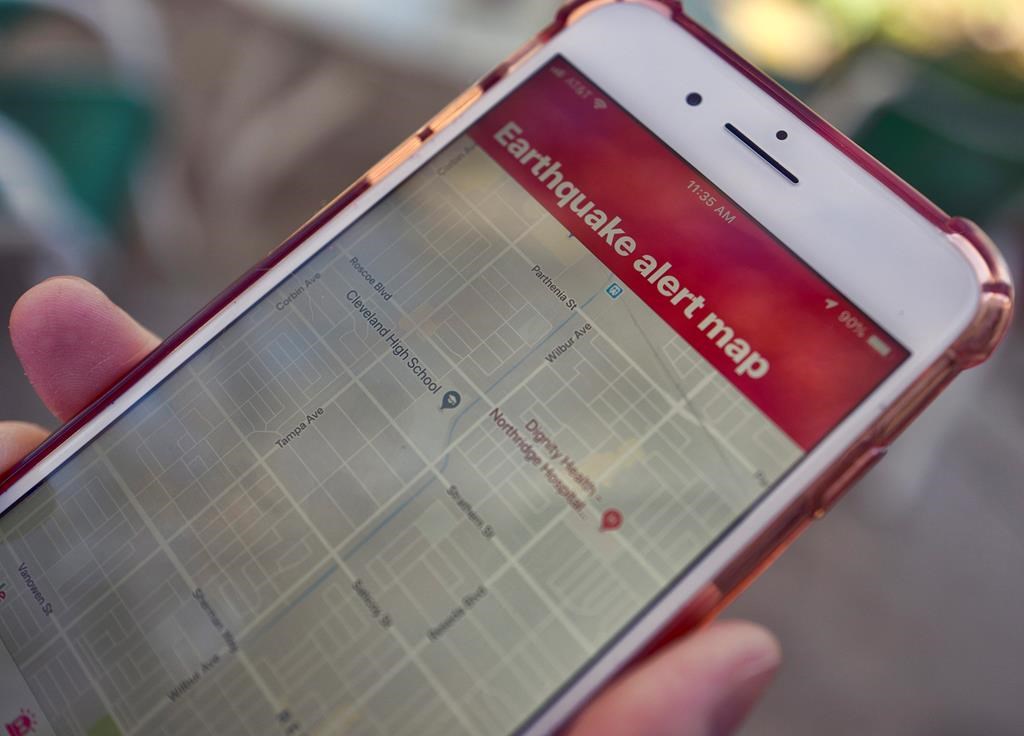
Following Thursday’s shaker that rattled people around the Lower Mainland and Vancouver Island, we’re learning more about the province’s earthquake alert system.
Just after 4 a.m., a mild earthquake measuring just shy of a magnitude 4.0 jolted many people awake. There were no reports of any damage or injuries and one expert 1130 NewsRadio spoke to believed it was a one-off.
Alison Bird, a Vancouver Island-based seismologist with Natural Resources Canada (NRC), says the system is known as the Canadian National Public Alerting System (NPAS), and it works — sort of.
The idea is that Canadians would get a warning before the arrival of powerful shaking, known as the S wave.
“Two main waves that come out from an earthquake. The really fast one is the P wave, the primary or pressure wave that’s very much like a soundwave. It’s usually the initial jolt or rumble you might experience and that’s not usually very harmful,” she explained.
“The sensors pick up that data, process the data very quickly, and then we send out the alert, and that’s before the slower, but more damaging S wave arrives — that’s the shear wave, that big side to side motion that tends to cause damage.”
The alert would go out to people in the area of an earthquake, including those visiting the province, but there’s a gap in the coverage.
“If you’re very close to the epicentre, you may not receive the warning in time. It’s just not physically possible to get the alert to people within that close epicentral region. You’ll get the alert after the shaking or during the shaking,” she explained.
This means the further away you are from the epicentre, the more warning you’ll have.
Bird, who has more than two decades of experience in this field, says they’ve done a lot of analysis and have found most people would get tens of seconds of warning.
“And those few seconds are really valuable. I mean, you really can make a difference in terms of your safety.”
Although the system is currently up and running, Bird admits improvements will be made into 2025.
“We will also be bringing on technical partners in the coming months who will do things like be able to stop trains, have alarms in hospitals to stop surgery, recall elevators, and open the doors. Closing valves that protect your water source, protect the environment from hazardous chemicals, stopping traffic from going onto bridges or into tunnels. All these little things you can do with just a few seconds.”
NPAS, a federal government system that works with provincial and territorial governments, applies to earthquakes that register magnitude 5.0 or higher and an intensity level greater than IV.
“British Columbia is more prone to earthquakes than anywhere else in Canada, and it’s important that we use the most advanced methods available to protect people across the province. The Earthquake Early Warning (EEW) system can help save lives and prevent injuries by giving people precious seconds to protect themselves and others,” Minister of Emergency Management and Climate Readiness Bowinn Ma previously explained.
NRC says there are roughly 5,000 earthquakes detected across Canada each year and are most common along the coast of B.C. and in Yukon, as well as along the St. Lawrence River and Ottawa River valleys in eastern Ontario and southern Quebec.
The Great B.C. Shake Out takes place on Oct. 17 at 10:17 a.m., an annual drill to help you train for the ‘big one.’